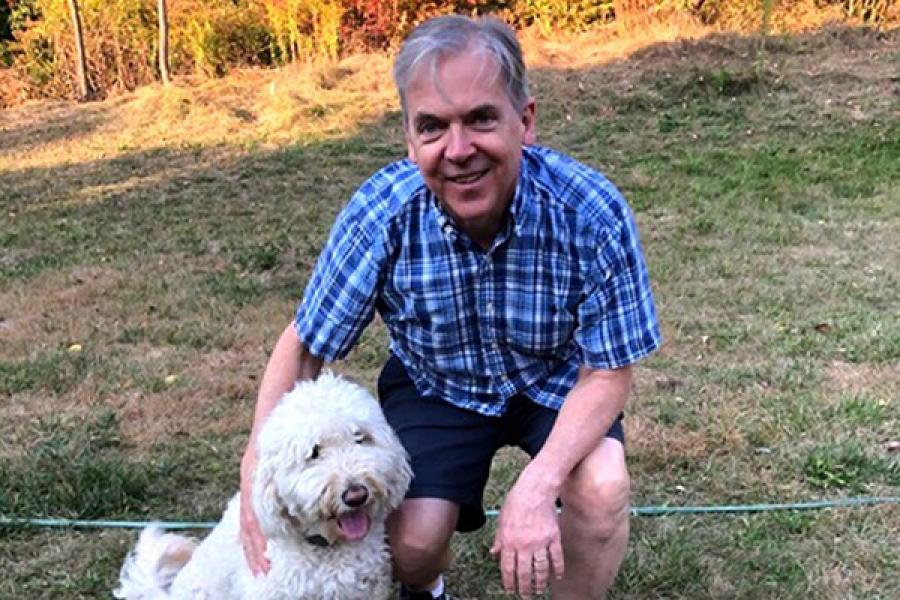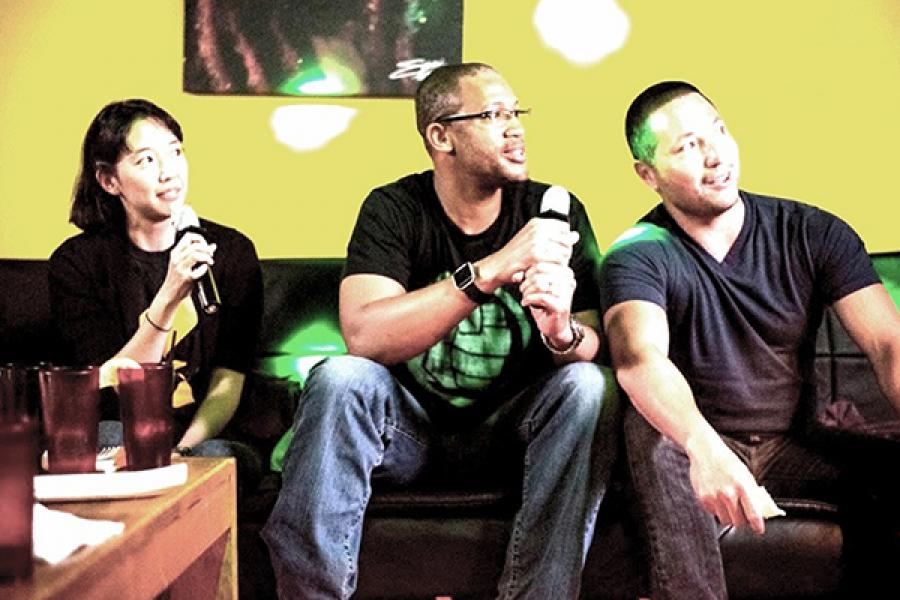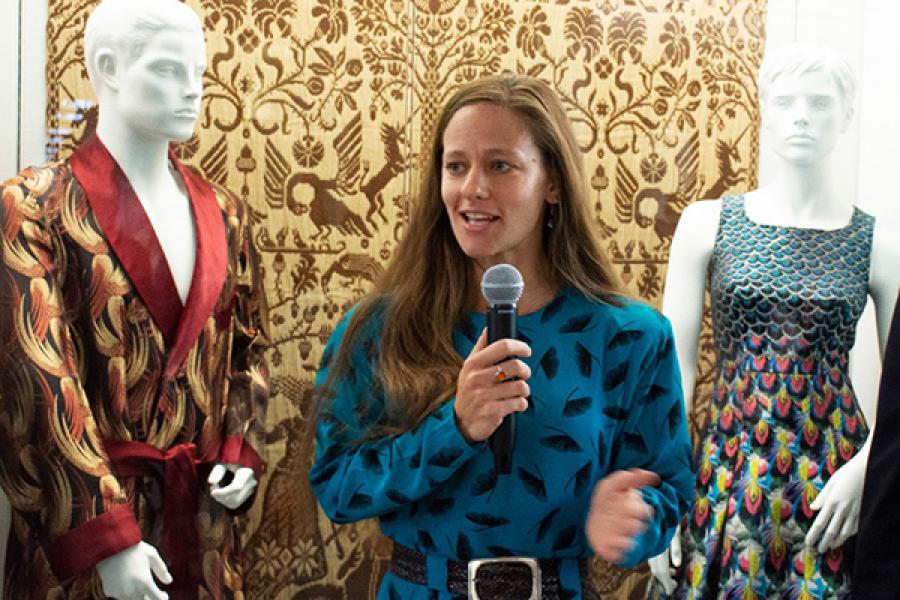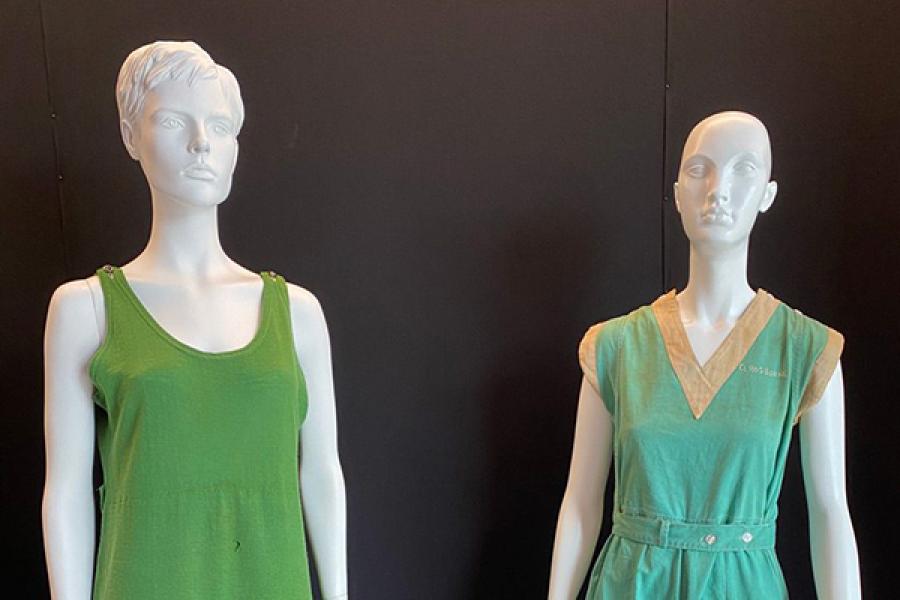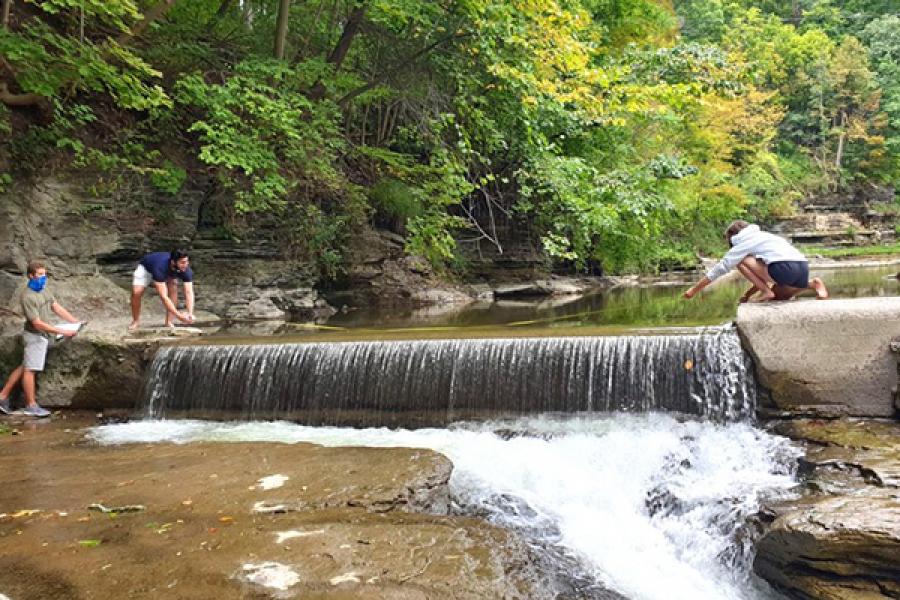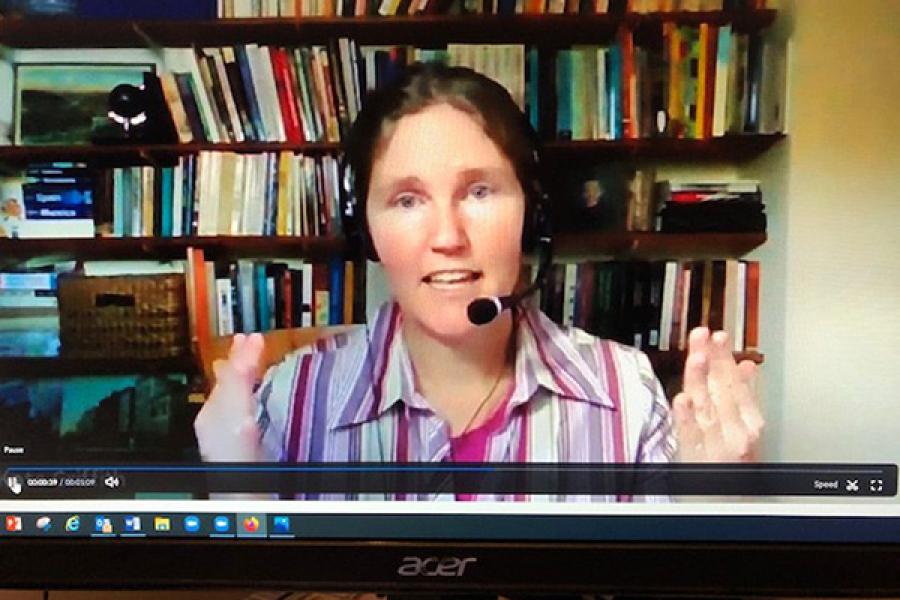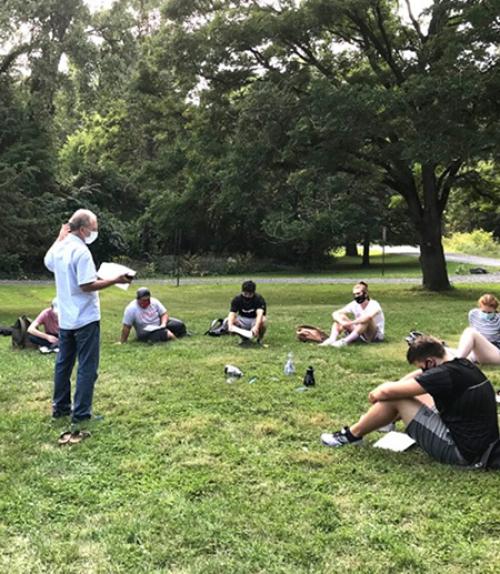Over the past ten months, Cornell faculty have been working to adjust and adapt to the new normal. Faculty have had to quickly master new technologies and new modes of instruction as they’ve transitioned from whiteboards to online polls. They’ve had to think through questions of equity and inclusion, as they attempt to balance the needs of remote and in-person students. And they’ve had to create new ways to engage with students who are socially and/or physically distanced from both their teachers and classmates. In short, Cornell faculty have invested extraordinary energy to reimagine their curricula—to ensure that students have the instruction, resources, and support they need to thrive.
As we begin the second month of the fall 2020 semester, Cornell faculty continue to navigate the challenges of teaching in the new normal. We reached out to faculty members across campus to hear how they and their students are doing. We hope their stories inspire you, as you learn how these Cornell faculty are innovating to provide the best possible education for their students.
Stephen Hilgartner ’83, Ph.D. ’88, Professor of Science & Technology Studies, College of Arts and Sciences
Stephen Hilgartner ’83, Ph.D. ’88 is teaching an undergraduate course called What is Science? (STS 2011), offered 100% online in fall 2020 to a group of 70 undergraduates. The course is intended to help students understand how science works and the roles of science and technology play in our society.
To make his online lectures more lively, Steve turned to his own children for inspiration. His college-age daughter inspired Steve to employ some of the video techniques that YouTubers use.
Steve is using a series of short videos to present the course material. “The goal is to create visually interesting videos that keep students engaged and promote learning,” he says.
“Producing short videos breaks the familiar 50-minute lecture format, which is actually quite liberating,” Steve says. He likes the flexibility to order the segments of the class in a strategic way. “I can give a 17-minute framing lecture, and then have the students read an article, and then follow that with some interpretation and critique of that approach.”
Steve’s son, who works in the film and TV industry, is helping Steve to edit the videos. “We’ve been splicing in visuals that help convey course content in an interesting way, and keeping things lively with relevant pop culture references.”
Steve’s dog Lulli helps to build camaraderie by making cameo appearances, sitting on the couch next to Steve, swimming in the lake, or even engaging in a debate—using a dubbed-in voice. “So far, the students really like the videos,” Steve says, “and they love my dog!”
Steve and his TAs added extra discussion sections this semester, to promote dialogue among students. There are seven sections, each with 10 students, with names chosen by the students. “One of the sections calls itself Lulli’s Fanbase,” Steve says. “We also have the Cayuga Lakers, Covell, the Science Alliance, and others.”
To make the class feel more interactive, Steve encourages his students to send him mail, which he reads and responds to in his videos.
“While I don’t respond to every comment and question personally, each week I pick three or so to talk about,” he explains. “I choose posts that raise issues that are interesting and touch on the implications of the ideas we are addressing.”
Steve Hilgartner prepared this short trailer to show how he is adapting his course, What Is Science?, to an online format in fall 2020. The video opens with a cameo appearance by Steve’s dog Lulli, the course mascot.
Steve is also considering the long-term applications of what he’s learning about incorporating videos into his lectures. “Producing videos has helped me focus in on key points in new ways,” Steve says. “I can see ways to use some of the media techniques I’ve learned in post-COVID teaching, when that again becomes possible,” he adds.
Tyrell J. Stewart-Harris, Lecturer, Management Communication, SC Johnson College of Business
Tyrell J. Stewart-Harris is a new faculty member in the Cornell SC Johnson College of Business. In fall 2020, he teaches Management Communication (HADM 1650 and AEM 2700), a course for first-year and transfer students in the School of Hotel Administration and in the Dyson School. The course is taught 100% online to a total of 88 students.
Tyrell’s goal is to teach his students “how to logically approach professional communication so that they can be effective leaders in the workforce.”
Like many of his colleagues, Tyrell realized early-on that a 15-minute lecture delivered online could soon start to feel “like a lifetime.” To keep students engaged, Tyrell has incorporated more hands-on activities at the start of class, before moving into discussions.
“The students are fairly competitive,” Tyrell says, “so I like to create competitive, time-based activities.” These timed activities help to keep students engaged and on track.
For example, he recently grouped students into hiring committees. “The committees had 45 minutes to read over all their peers’ application materials, rank them, provide feedback, and post the results to the class discussion forum. This worked well because the students liked ranking each other, and they all got to see where they stood when evaluated by their peers,” Tyrell explains.
He discussed the rankings with the class, to help students identify their own weaknesses and understand why some students performed better. “I also offered more critique for the top-ranked portfolios, to illustrate how there is always something that can be improved,” he says.
Tyrell makes an extra effort to arrive early and stay after class to chat with students. “It can be hard to connect with students when I’m just a tiny square on their screen. I take the first few minutes of class to check in with them, joke around a bit, and make sure that everyone is ready for class,” he says.
Tyrell reports that, so far, the feedback from students has been great.
Tyrell admits that some of his strategies have largely gone unnoticed. For example, he says he has been usingopen-source images to decorate his PowerPoint slides with visual puns. “I’m not sure if the students noticed, but I’ve enjoyed it,” he says.
Tyrell says that his first year at Cornell has been “one of my favorite teaching experiences of all time.” He credits this to the professional support he’s received from the university and from his colleagues, who have freely shared resources, materials, and strategies.
“This year, the Hotel School created a program called Hotel Educators Success Program, which helps new faculty, like me, learn more about the industry and the school. The meetings are short, but they are full of great presentations from award-winning faculty or industry representatives,” Tyrell says.
Denise Nicole Green ’07, Associate Professor and Director, Cornell Fashion + Textile Collection, College of Human Ecology
This semester Denise Nicole Green ’07 is a faculty fellow at the Society for the Humanities, where she is teaching a new course, Curating Fashion Exhibitions (SHUM 4651/6651), which explores the Society’s 2020-2021 focal theme, fabrication.
The class format is hybrid, with about two-thirds of the 19 students participating in-person, and the rest online. The class is a mix of upper-level undergraduates and graduate students across a range of disciplines.
“Fashion is embodied, material, three-dimensional, and dynamic,” Denise explains, which make it an especially challenging subject to cover online.
Denise began this semester by challenging her students to design and produce an exhibit on campus. “This rapid fashion curation project was inspired by our collective campus aspiration: GREEN: NEW NORMAL,” she says.
For the exhibit, she asked each of her students to research two green-colored pieces from the collection. Denise then met with each student, either virtually or in person, to enable them to handle their artifact. “The online students remotely ‘handled’ the artifacts. I met with them via Zoom from the collection storage workroom and showed them their artifacts over video chat,” she explains.
Students worked together to come up with a curation plan, and the class voted to select their favorite. The exhibit, Green Armor, opens October 5 in the Human Ecology Building, with a satellite exhibit in the Opatrny Gallery in the Herbert F. Johnson Museum of Art opening October 20, and a digital exhibit launching in mid-October.
“The class broke into teams to tackle installation, photography, graphic design, labels, and promotion, and advertising,” Denise says. “It was a wonderful opportunity for students to learn to work together—both virtually and in person—to fabricate a fashion exhibition that responds directly to our shared experience of the ‘new normal.’”
Denise shares that the pandemic has helped to launch a new wave of online fashion exhibits. “A plethora of new online fashion exhibitions has been one of the exciting outcomes for the Cornell Fashion + Textile Collection over the past seven months,” she says. “We’ve also spent a lot of time improving our catalog database to enhance digital accessibility.”
“I know from experience that limitations and restrictions often result in innovation, because we are forced to think of creative solutions and workarounds,” she says. “We are finding new ways to convey material culture in digital form,” Denise says.
Louis A. Derry, Professor, Earth and Atmospheric Sciences, College of Engineering
This fall, Louis A. Derry is teaching Introduction to Biogeochemistry (EAS 3030). There are 19 students attending in-person and 4 students joining remotely.
In prior years, the course incorporated field work, lab work, and computer modeling exercises. “We can’t do the laboratory work under current conditions,” Lou explains, “because we don’t have the appropriate space for COVID protocols.”
So, Lou has adapted the curriculum this semester to expand the field component. “Every week we choose a site on or near campus and bring portable instrumentation to collect data,” he says. This is effective because a key goal of the course is to help students understand the scientific concepts they are learning in the context of things they can see.
While they are in the field, Lou asks his students to make visual observations about species, stream banks, soils, and evidence of past water levels. They also collect field data, such as temperature profiles, pH, and gas fluxes. They then combine their observations with the data to try to unravel what’s going on.
“We try to assemble an understanding of the set of processes that we have chosen to focus on for that day,” Lou explains. “Biogeochemistry is a complex subject and integrating all the information is a challenge for anyone, especially students who are grappling with this for the first time.”
Lou’s Teaching Assistant, Nico Rangel Jurado, videos the field work for the remote students to view asynchronously, since they are not able to participate in-person.
“The technology of broadcasting lectures is still fiddly and awkward,” Lou admits. “I built a ‘lightboard’ system that allows me to write on a piece of glass with whiteboard markers and project both to the classroom and the web, but it took some time to work out the kinks.”
On a positive note, Lou and his students are exploring new field sites and data sets, including data from the Cornell Water Filtration Plant provided by Chris Bordlemay, manager of water and wastewater at the university.
The class is also using data from the Northeast Regional Climate Center in Bradfield Hall and the Climate Reference Network (CRN) site at Cornell’s Harford Farm location, a site considered to be “the ‘gold standard’ for climate monitoring,” Lou says.
Lou is working with his students to develop models that can help interpret their observations and data. These models can also be used to do forecasting.
“How should we expect these systems to respond to changing temperature or precipitation inputs? We’re already seeing this happen,” Lou says, “and we’re having fun taking advantage of local resources.”
Kate Griffith, Jean McKelvey-Alice Grant Professor and Chair, Department of Labor Relations, Law, & History, School of Industrial and Labor Relations
Kate Griffith is teaching Labor and Employment Law (ILRLR 2010), a required class for undergraduates in the School of Industrial and Labor Relations. The course offers an introduction to legal analysis, research, and writing, and there are 50 students enrolled online.
Kate says that she is striving to keep this semester’s Zoom class as similar as possible to the in-person version she’s taught in previous semesters.
“My general approach to teaching has always been to promote a lot of student-teacher interaction in the classroom and to encourage students to find their voice in a classroom setting,” she says.
To accomplish this, Kate divided the class into three groups, one of which is designated as the ‘on-call’ group. “Any student can participate at any time, but I call on the members of the on-call group at random throughout the class. This practice allows some of my more timid, but very engaged and intelligent, students to shine,” Kate reports.
By listening to student responses, Kate can gauge when they are confused and step in to offer further clarification. “I have always used this on-call method, but this semester I made the on-call groups much bigger. That means I am hearing a wider variety of student views,” she says.
Kate says that, for an introvert such as herself, she sometimes feels self-conscious using a video platform like Zoom. “When I say something jokingly in an in-person class, there are always at least a few students who smile at me or laugh out of kindness,” she confesses. “On Zoom, since everyone is muted, my self-effacing humor or attempts at a joke are often met with Zoom silence.”
Over the summer, Kate recalls a vivid nightmare she had about making multiple Zoom mistakes during class. But, day by day, Kate says that she’s growing more comfortable with the platform. She credits her students with helping to turn this semester around and show her the silver lining.
“My students engage deeply with the material. They make connections between my law class and their economics class. They ask questions that get at the heart of a court’s reasoning. They respectfully answer one another’s questions, rather than relying on me to tell them the answer. The truth is, I look forward to every class period now,” she says.
Kate believes that she is learning as much from her students as (she hopes that) they are learning from her. “I am even more inspired by Cornell students than ever before,” she says.
Ken Birman, N. Rama Rao Professor of Computer Science, Computing and Information Science
Ken Birman created a completely new course this fall: Systems Programming (CS4414). There are 118 students currently enrolled from a mix of majors, including Computer Science and Electrical and Computer Engineering, as well as Master of Engineering students who are hoping to broaden their programming skills.
The class teaches students to build large software systems.
“Today, most jobs involve big data,” Ken says. For example, a student working at Facebook might be tasked with designing a program that analyzes uploaded photos to select the best ones for a memory book or for sharing with someone else in the photo, he explains. Ken’s new class aims to teach the skills and concepts to enable students to do this sort of big-data programming.
The class is offered both online and in-person. “For those who feel comfortable sitting in a large lecture space with other people in the room, I’ve encouraged them to do so,” Ken says. “The room is very safe and well ventilated, and I think it really is important for the students to have chances to interact with other people in a more direct way,” he says.
“Because online lectures can be somewhat distancing,” Ken says it’s been challenging to create a back-and-forth dialog between himself, his TAs, and the students in the online format. “As a professor, I worry that students might be lost, but too afraid or embarrassed to ask a question,” he says. “Some students have the extra burden of not being completely comfortable in English.”
To address this challenge, Ken has been relying on the chat feature of Zoom to help keep the dialog flowing. The chat function allows students time to compose their questions and post them without drawing attention to themselves.
“Using the chat function is less of a barrier than raising their hand in class for these students,” Ken says. Additionally, his TAs can respond to student questions while he is talking. “The dynamic is very fluid,” he says. “Some aspects of the online tools are quite valuable, and I’m starting to think about how we could take advantage of them even when life returns to normal,” he adds.
This semester, Ken is most concerned about the emotional health of his students. “It worries me to think of a young person, far from home, who may have returned to Cornell but now finds themselves spending all day every day in their dorm room or rental, and perhaps afraid to set foot outside of their room.”
To counter this, Ken and his TAs are conducting periodic check-ins with their students, “so that we would have a chance to notice if someone is having difficulty,” he says. He is also encouraging his students to get outdoors for a walk, or to study in the Botanic Gardens or in a safe indoor study space, as often as possible.
Read the story on the Cornell Alumni website.
